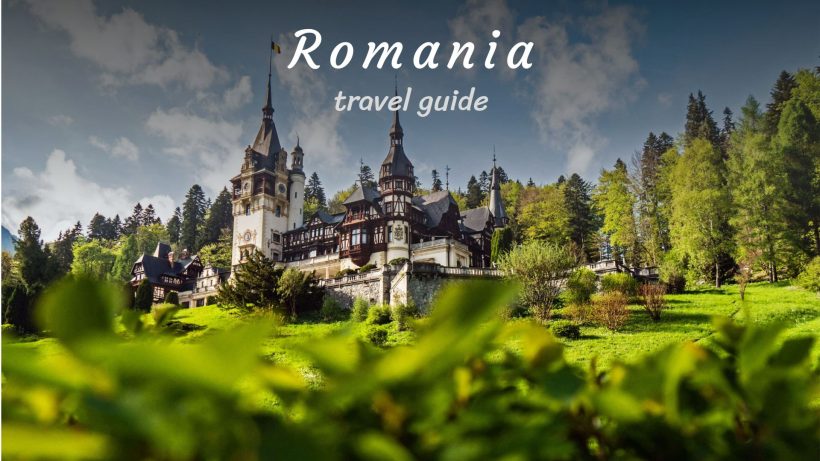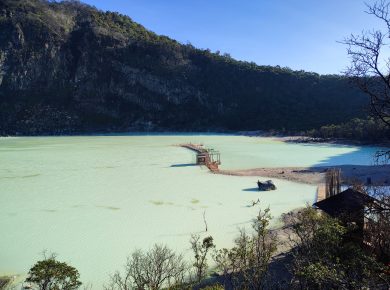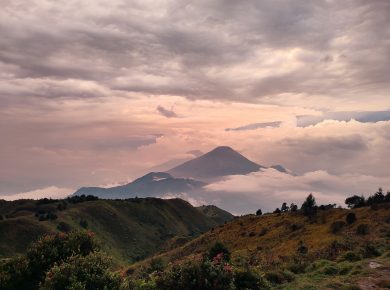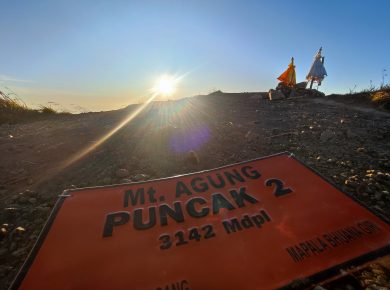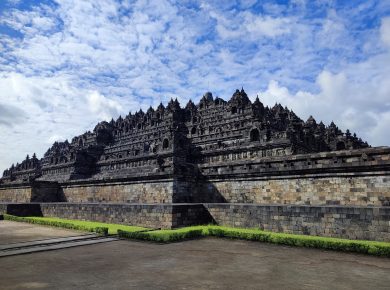What to see in Romania, one of the least common countries in Europe. However, its popularity is on the rise, and is gradually becoming a tourist center in Eastern Europe.
It is located at the eastern end of the Balkan peninsula and has been a member of the European Union since 2007. With many beautiful natural landscapes, a rich history and culture, country life, and mountains with dream landscapes, it is not surprising that more and more people decide to pass through Romania every day.
Contents
Short History of the Country
With a communist past, it is currently one of the countries in Europe that grows the most year after year, improving the quality of life and the economy of the people.
The Romanian language is very accessible for travelers who speak Spanish. Around 100 B.C., the region known as Getae was conquered by the Roman Empire (the emperor of Cordovan origin Trajan) and reconverted into the Roman province of Dacia.

They ruled it for about 400 years until the Goths and Carps took over the region. Although the Romans left, Latin continued to be used for the most part.
Romania today speaks the Latin language, with many similarities to Spanish. It is relatively easy to understand the basics of most of what is written in Romanian.
Romania’s location is strategic for anyone visiting Eastern Europe, or crossing into Turkey and Asia. Many travelers arrive directly by plane to Bucharest, the country’s capital and largest city. It is possible to get the cheapest flights from the Skyscanner app or directly on the Skyscanner website.
What to see in Romania
Romania is a country of contrasts. It is a country with a vast territory, which combines the modernity of some cities that grow rapidly. with a quiet rhythm in small towns that seem to come directly out of a couple of centuries ago.

The Black Sea coast and the Carpathian mountain range are probably two of the things for which the country is best known
Bucharest–Not to be missed in Romania
The capital and most important city of Romania, essential for anyone visiting the country. In constant growth, it is a place where you can find a 300-year-old church next to a modern building. The historical center is beautiful and has several points of interest for any curious tourist.

It used to be called the Little Paris, and just seeing that they have their version of the Arc de Triomphe is enough to realize the reason. Among other places to visit, it has one of the most beautiful bookstores in the world, beautiful monasteries, a street full of colorful umbrellas, and the largest parliament in the world.
Transylvania–Classic to see in Romania
Transylvania is a region located in central Romania, surrounded by the Carpathians. It is famous for being the place of origin of Count Dracula. Possibly, it is the area most visited by tourists who go to Romania, in addition to the capital.
Cluj-Napoca
It is one of the most visited cities in the country, and the unofficial capital of Transylvania. It is a great experience for those who want to see the urban life of Transylvania.
It has good food, excellent cultural activities, an interesting historical legacy, and good nightlife. Cluj (as it is colloquially called) is easy to access and move around.
Bran
Bran is famous for the Castle of the same name, also known as Dracula’s Castle. Although Dracula is a fictional character, he is said to have been inspired by Vlad the Empaler, Prince of Wallachia. His thirst for blood was what gave rise to the myth.

However, there are few historical details as to whether Bran Castle was really the place where Vlad lived during his lifetime. It is believed that he actually lived somewhere else, not far away.
It serves tourism much better to say that he was here and revitalize a place that, if it weren’t for Dracula’s history and his remote relationship with this castle, no one would visit.
Brasov
Brasov is the place where many bases to visit Bran in the day. Located in the center of the country, next to the mountains, is about 180 km from Bucharest and it is possible to visit without sleeping in the place.

However, it is recommended to see it quietly and walk around the area. The old historical center is very beautiful and contrasts with the rest of the modern and industrial city that today is Brasov.
Sibiu
Sibiu is a city in Transylvania that is famous for the Germanic architecture of its old town, a legacy of the 12th-century Saxon settlers. Around the city, lie remains of medieval walls and towers, including the 13th century Council Tower. It is very beautiful and has a different landscape from other places in Romania.
Turda Salt Flat
One of the destinations that are becoming increasingly popular, especially thanks to the dissemination on social networks, is the Salina de Turda. One of the rarest places to see in Romania.
The salt in Turda has been extracted since antiquity, existing mentioned already in the year 1075, and with a full operation until 1932 when its exploitation was paralyzed. However, there is evidence that the Romans were one of the main salt mines throughout the Empire.
The reopening of the mine as a tourist space meant a real tourist boom, boosted by the remodeling of 2008 that involved a symbiosis between futuristic architecture and the grandiosity of the mine itself. You can go in the day from Cluj since the distance is not great.
Timisoara
The third largest city in Romania, and probably the most modern in the country. It has a youthful life and good nightlife. It is also frequently chosen by digital nomads because the cost of living is low, the city is quiet but has everything one needs, the internet connection is good and there are many people in the same situation.
Sinaia – Palaces to see in Romania
Sinaia knew how to be one of the most chosen destinations by the Romanian aristocracy in the past. At the end of the 19th century, the king chose it as the place to build his summer residence, giving life to the famous Castle Peleş. Today the castle is the main reason why Sinaia receives a large flow of visitors. The castle is beautiful and looks like a tale of princesses.

Thanks to the fact that it had its own power station, Peleș was the first castle in Europe to have electricity and an elevator.
The castle was the residence of the royal family until 1948 when it was conquered by the communists. In 1953 the castle became a museum, but it was not opened to the public until 1990. Today it is one of the most visited places by tourists throughout Romania.
Constanța
This city overlooks the coast of the Black Sea and is the second most important city in the country. During the summer it becomes tourist, while the rest of the year it is the largest port city in Romania. An ideal city to start exploring the coastal area. It has an old casino which is very nice and I recommend visiting.

Where to Sleep
Like any European tourist country, there are many options for staying in Romania. Whenever you can do Couchsurfing it’s a good idea to meet locals and save on accommodation.
It also helped us to stay in local houses for a much lower price through Airbnb. Here I give you my discount for a cheaper price, as well as a short guide on how and why to use it.
The hostels are generally of good quality, with reasonable prices in some cases. If we want a more comfortable and luxurious experience, most of the top international hotel chains are present in Bucharest, Timisoara, and other of the most visited destinations.
Security
In general, Romania is a very safe country, at the same standard as other European Union countries. The basic precautions always apply: be careful with valuables such as cameras, cell phones, or laptops. I recommend not leaving cash inside the room.
There are neighborhoods that are not so nice for walking at night. Avoid alleys and areas with little light. Apply logical criteria and there should be no problems unless you are very lucky. Beware of burglaries, especially at bus or train terminals.
Although it is not good to generalize, many tourists are especially careful with the gypsies who have earned a bad reputation for a few who have done things badly.
Health
Like most of Europe, Romania does not present major health hazards. The hospital system is reliable. The water is drinkable, there are no endemic diseases and it is difficult to have problems in general, either because of bad food or because of some contagious disease. However, it is always necessary to be cautious. I also recommend reading this article about vaccinations for travelers.
Travel Insurance
Hire safely! Even if the trip a priori seems like a short trip, to a place that does not present too much danger, it is always wise to have travel insurance that covers any eventuality.
If we don’t need to use it later, better… but risking not being covered for a serious health problem, theft, loss of luggage, or the like, and having to pay thousands of dollars out of our pocket, doesn’t sound like fun to anyone.
Even if they travel as cheaply as possible, I think there are other better ways to save (such as food, transportation, and lodging). In fact, many countries ask for travel insurance as an income requirement (although, in practice, they almost never ask for it).
Among all the travel insurance I have researched, the most popular, which always responds and is completely international is WorldNomads, but they can choose the one they like best.
Also note that many international credit cards, especially gold, platinum, and black, automatically have travel insurance without the need to register.
They are automatic, have decent coverage and for most travelers, they reaches – finds out before you start traveling!
How to move according to what to see in Romania
Romania has ample possibilities to move, from trains (in the connected zones), to urban and interurban buses, airplanes, and even boats to the zones to which it is possible to arrive (especially by the Danube River and in the Black Sea).
In general, all services are of good quality so I recommend taking the cheapest. We moved within Romania a lot by subway in Bucharest, and from city to city by train.
When to travel
Romania’s climate is continental, characteristic of Central Europe, with hot and dry summers with average temperatures of 28 °C, and in July and August, they surpass 30 °C.
More moderate temperatures on the Black Sea coast. The winter season extends from November to April, with temperatures in December and January averaging 10° below zero or lower in areas such as Tirgu-Mureş or Brasov.
Romania can be visited all year round. The winter months are cooler and have many fewer hours of sunshine, making the overall experience less enjoyable. The high season is the months of July and August, in the middle of summer when the country also enjoys the warmest climate.
Unless we plan to enjoy the country’s beaches extensively, it is totally viable to go in spring or autumn. The climate is usually excellent, and the prices of everything, being low season, are lower.
It is also ideal to go out of season to avoid the waits to enter tourist places, or to have hundreds of people in each place that one cannot even take a calm photo. We were in autumn.
Entry Requirements
Romania is quite flexible with the entry of foreigners. If we enter from any European country, there is usually no inconvenience in entering.
The European Union, or at least the countries within the Schengen agreement, functions as a block so you migrate in and out of the area, not country by country.
Romania is not yet part of the agreement but is obliged to enter in the coming years so for now, we have to migrate.
When they arrive in Romania, like in many countries, they can ask for proof of money to prove that we can afford the trip, as well as having an exit ticket. It is also useful to have a hotel or accommodation booked to show
Although they generally do not ask for it, it is technically mandatory to have active travel insurance.
Cost
Romania is part of the European Union, but it does not manage the euro and its economy is considerably weaker than that of Western Europe (although this is changing rapidly). In fact, it is among the most economic countries in Europe.
If you keep a limited budget taking into account everything you see in Romania, it is a country that can be very cheap and gives you the possibility to spend some time without spending too much.
Trying to save on accommodation and food you can tour Romania at reasonable prices. It is always advisable to cook, stay for free by Couchsurfing, or use Airbnb to get much better prices in rooms of houses than we can find in most hotels.
Money
The local currency is the Leu (plural Lei). It is issued in notes of 1 leu, 5, 10, 50, 100, 200, and 500 lei, the divisor (cents or cents) of the Leu is called Bani, which are coins of 1, 5, 10, and 50 bani.
It is easy to change euros or dollars in most cities, so if possible I recommend carrying cash, or withdrawing at any local ATM. Credit cards are common and almost all businesses accept them.
Internet
The Internet in Romania is fast and accessible. There is wifi in almost all restaurants and hotels, with good general speed. Even in many public places, there is a free Wi-Fi connection.
With a European SIM card with data, we can take advantage of the 4g without paying extra (since roaming now works for the whole of Europe without additional costs).
Anyway, this sometimes changes, so it is best to ask before traveling. The connection is good, fast, reliable, and covers the whole country.
